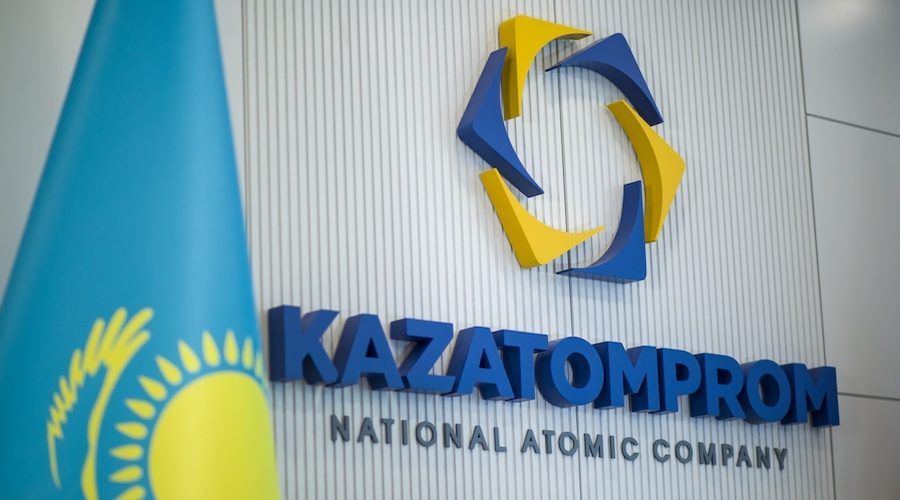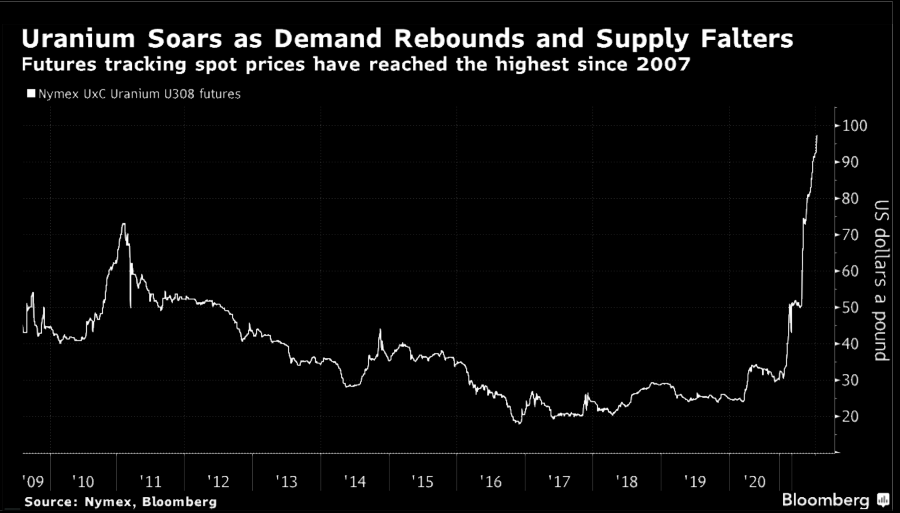Uranium price jumps to 15-year high as top miner flags shortfall

Uranium prices jumped on Friday to an almost 15-year high after the world’s largest producer, Kazakhstan’s Kazatomprom (LON: KAP), warned it’s likely to fall short of its output targets over the next two years.
The miner cited shortages of sulfuric acid and construction delays at newly developed deposits as the main factors behind ongoing production challenges, which it said could persist into 2025. A detailed assessment of the potential impacts on output will be released in a trading update by Feb. 1, it added.
“Despite the ongoing active search for alternative sources of sulfuric acid supply, current forecasts indicate that the company may find it difficult to achieve 90% production levels compared to subsoil use contract levels,” Kazatomprom said in the statement.
Sulfuric acid is a favourite among producers to extract uranium from the raw ore due to its low-cost and efficiency for different types of ores.
Kazatomprom noted its guidance for next year could also be affected if supply snags continue throughout 2024 and if it isn’t able to comply with scheduled construction works.
The spot price of the radioactive metal has more-than doubled in 2023 and it is currently trading at $97.45 a pound — still far from the triple-digit figures achieved in 2007 and the fallout after the 2011 Fukushima disaster in Japan.
The price increase comes as 24 nations, including the United States, Japan, Canada, Britain and France pledged last month in Dubai at the 28th Conference of the Parties to the United Nations Framework Convention on Climate Change, known as COP28, to triple nuclear power capacity by 2050.

China, which wasn’t part of that promise, still leads global nuclear plant construction with plans to nearly double capacity to 100 gigawatts by the end of this decade. The Asian country has 22 of 58 plants being built worldwide.
Recent legislation in the US could also affect uranium prices, even sooner than other factors. Seeking to cut its reliance on Russia, which supplies more than one-fifth of its uranium, Congress passed a bill in December that would require the US to source a portion of its nuclear fuel domestically. The bill calls for 20 tonnes of HALEU — high-assay low enriched uranium fuel needed to run most advanced reactors in the country — to come from domestic sources by the end of 2027. It now awaits President Joe Biden’s signature.
Bank of America and Berenberg Bank said this week in separate research notes that continued tightness in the uranium market could push prices over $100 in coming days.
More News
Rio Tinto, Founders Factory’s Mining Tech Accelerator invests in startups from US and OZ
April 23, 2025 | 04:02 pm
{{ commodity.name }}
{{ post.title }}
{{ post.date }}



Comments